1/12scale Fulldetail Kit : BT55
●本製品は、2025年6月下旬~7月初旬頃発売予定です。ご予約をご希望のお客様は、下記のメールフォームにてご連絡をお願いいたします。
●ご予約数が一定数を超えた場合、初回生産分が発売前にご予約で完売になる場合がございます。その場合、次回生産までお待ちいただくことになります。この点、ご了承願います。
ご予約はこちらへ。
- this product is scheduled to be release in late June or early July 2025. To place a pre-order please use the link below to contact us using the mail form.
- if pre-orders reach a certain number this product may become out of stock before release as only a limited number will be made during the initial run. Any other pre-orders following will be covered during the next production run. We will stop taking pre-orders/orders completely should the order numbers surpass the maximum production amount.
For pre-preorders, please contact us here
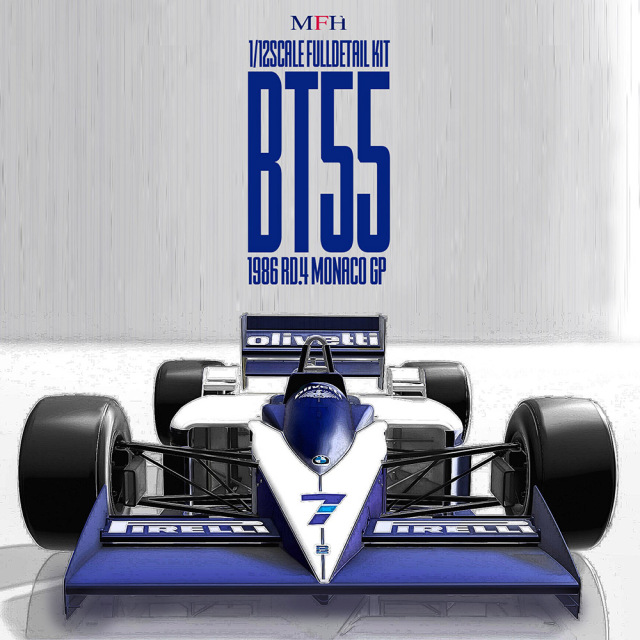
2025年6月発売予定 June 2025
Price : \82,000- (+tax)
[ BT55について -About the BT55- ]
ゴードン・マーレイ ―― 後に天才・奇才と評されるF1デザイナーは、1969年、故郷南アフリカから単身イギリスに渡りブラバムにて職を得、その才能をグランプリにおいて遺憾なく発揮することになります。ブラバム時代のマーレイが設計したマシンは常にレギュレーションの隙間を狙った革新的アイデアが盛り込まれていました。"表面冷却"BT46、"Fan car"BT46B、走行中に車高を下降させるBT49、給油前提小型燃料タンク搭載のBT52..
そして、先進と革新でグランプリを闘い続けてきたマーレイにとって、迎えた1986年は、新たな理想形を現出すべく乗り越えるべき課題がいくつかあるシーズンでした。時代はターボ全盛となり、パワーが何より重要なファクターとなっていく中、ライバル勢よりもやや非力なBMWエンジン、そして83年からのフラットボトム規制を超えてダウンフォースを得る為の車体デザインの必要性、それまでのエースドライバー N.ピケの移籍.. マーレイがそこから導き出した答え ―― それは、"ロー・ライン・フォルム"。マシンを極限まで低く抑え、大型リアウイングに強いダウンフォースを発生させるコンセプトでした。そのために、BMWエンジンは72度傾け全高を低く抑え、ボディサイドはドライバーの肩より低くなり、エンジンに合わせたギヤボックスも新造することになりました。風防実験を通して手ごたえを感じたマーレイとチーム首脳陣は、この極限まで研ぎ澄まされたコンセプトとボディシェイプを纏ったニューマシン、"BT55"を1986年開幕の地、リオデジャネイロのジャカレパグアへ送り出したのでした。
しかし、"理想形"であったはずのマシンは、走行を重ねる度に問題が頻出する事態になります。傾けたエンジンによるオイルの潤滑不良問題、前年から採用されたピレリタイヤとのマッチング不足、長いホイールベースによる回頭性低下、ギヤボックスの信頼性不足..BT55は、その低重心故にストレートやコーナーで一定の速さを見せるものの、これらの問題点からトータルでのラップタイムを稼ぐことはできませんでした。さらに、シーズン半ばにしてチームに悲劇が襲います。5月のテストにおいて、ドライバーのエリオ・デ・アンジェリスが亡くなるという出来事に見舞われます。その後、デ・アンジェリスの代役として、デレック・ワーウィックがリカルド・パトレーゼとタッグを組んで残りの86年シーズンを闘うことになります。
BT55は、その成績故、シーズン中に大小さまざまな改変が行われました。開幕戦ではエンジンファンネルとチャンバーを低く抑えリアカウル内に収めるデザインで、そこから2戦目以降チャンバーがリアカウルから露出する高さに改められ、4戦目モナコでは重量配分改善のため左クーラーとターボが後方へ下がり、サイドポンツーン上のダクトも位置が下がりました。その後もサイドポンツーン前部やリアカウルの形状変更等、試行錯誤が最後まで繰り返され、86年シーズンを終えることになります。
BT55は、後年、そのラジカルすぎる設計思想から、"コンセプト先行の失敗作"と揶揄されることがあります。しかし、そう一言で片付けて良いマシンだったのでしょうか。多くの人々の記憶に残るその美しいフォルム、野心と想像力と理想への探求心が形となってレーシングマシンへと結実していた時代の名残..BT55は、語り継ぐべき物語を持ったF1マシンと言えるのではないでしょうか。そして、このマシンに纏わる物語は、続きがあるのです。
1986年シーズンから2年後、ブラバムから移籍したマーレイとマクラーレン設計陣が生み出したマシン、MP4/4は、F1史に残る偉業を成し遂げることになります。そこでチャンピオンを獲得した、時代を代表する"最強のマシン"こそは、マーレイが理想とした"ロー・ライン・フォルム"のコンセプトが正しく機能し、その思考の出発点たるBT55を礎として生まれたマシンの姿だったのです。
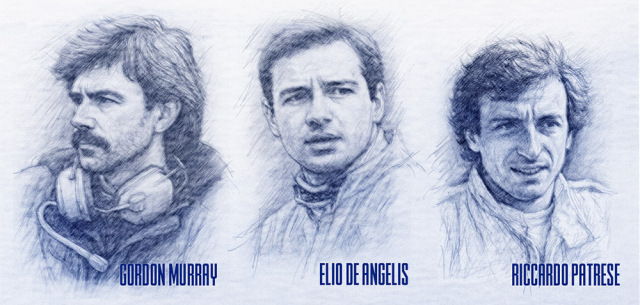
In 1969, Gordon Murray left his native South Africa to take up a job with Brabham, where he demonstrated his design talents in the field of Grand Prix racing. Many of his designs during the Brabham era aimed to exploit holes in the regulations, such as the “surface cooled” BT46, the “fan car” BT46B, the BT49 which lowered the ride height when driven, the BT52 which has a small fuel tank for refueling etc. All these innovations would make Murray remembered as a genius and maverick F1 designer.
In 1986 Murray would have new challenges to face: the majority of teams would use turbo engines, but the team was left with a BMW engine that was weaker than what their rivals had in an era where engine power was the most important factor. In addition, the new car needed to overcome the 1983 flat bottom regulations and yet still be able to produce downforce, and the team would lose their ace driver with N.Piquet leaving the team. The answer that Murray came up with was “low line form” - the machine would be designed to be as low as possible in conjunction with a large rear wing to generate strong downforce. To do so, the BMW engine was tiled as 72 degrees to reduce the overall height, with the body sides being lower than the driver's shoulders, and a brand new gearbox was designed to work in tandem with the engine. After positive results from wind tunnel testing the design concept was taken to the limit to create the BT55, which would debut at Jacarepagua, Rio de Janeiro for the 1986 season opener.
However, despite the machine achieving its “ideal” form, problems began to surface once it started racing - the tilted engine caused lubrication problems, the Pirelli tires brought over from the previous year did not work well with the car, the long wheelbase reduced turning performance, and the gearbox was unreliable. While the BT55 seemed fast on straights and corners due to its low center of gravity, it was unable to produce fast total lap times. Midway through the season tragedy struck when the team lost their driver Elio de Angelis during a test run in May. Angelis was replaced by Derek Warwick, and he and Riccardo Patrese would team up for the remainder of the 1986 season.
Various changes were made to the BT55 in hopes to improve its performance: during the season opener the engine funnels and chamber were lowered to fit under the cowl better, but in the following race the chamber was raised and exposed through the real cowl. At Rd.4 in Monaco the left cooler and turbo were moved back to improve weight distribution, and the ducts on the side pontoons were also lowered. Various changes were made to the front of the sidepods and real cowl through trail and error throughout the season, but the car showing little improvement as the season came to an end.
The BT55 would be remembered as a radical car that worked in concept but not in motion. While it was a failure, it represented an era where racing machines were designed with ambition, imagination and ideals, all under a beautiful form that would be remembered by many.
In 1988, Murray would move to the McLaren team, and along with their design team would bring forth the MP4/4 – the strongest F1 machine at the time. The MP4/4 properly utilized Murray's low line form concept, in which the BT55 served as the originator of the concept in motion.
[ キット概要 -Kit Details- ]
■レジン、ホワイトメタル、エッチング、シルクスクリーン印刷デカール、ゴムパーツ、アルミ挽き物、各種コード類等をふんだんに使用したマルチマテリアル・キットです。
■E.デ・アンジェリスにとって最後のF1レースとなった1986年第4戦、モナコGP仕様をモデル化しました。デカールはR.パトレーゼとE.デ・アンジェリス、2台の選択式。
■ホイールリム、メインメーター、リアダンパー下部、ホイールシャフト・ナットはアルミ挽き物製。
■ECU(エンジンコントロールユニット)パーツは3Dプリント樹脂製で内部ディテールも再現。
■各種パイピング、チューブ、耐熱シート等、マルチマテリアルでパーツ化し、リアルさを追求しました。
■ボディカウルとノーズは車体から脱着が可能。完成後も内部構造を見ることができます。
■スポンサーロゴデカールの他に、モノコック等に使用するカーボン・ケブラーデカールを同梱。
■ゴム製タイヤはメーカーロゴ印刷済。
- a full detailed, multi-material kit featuring white metal, resin, etching, turned parts, rubber parts, silk screen decals and various cords allowing for maximum representation of the original vehicle.
- based on the version that raced at Rd. 4 Monaco GP in 1986, which marked de Angelis' last F1 race. Decals for R. Patrese's car for the same race also included.
- aluminum turned parts used for wheel rim, main meter, lower rear damper, wheel shaft and lock nut.
- ECU (engine control unit) parts made using 3D printing, allowing for a detailed interior finish.
- various materials used for piping, tubes, heat resistant sheet etc. for a realistic finish.
- body cowl and nose can be removed post construction, allowing full view of the detailed interior after completion.
- carbon and kevlar decals included on top of sponsor decals.
- tire comes pre-printed with maker logo.
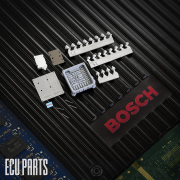
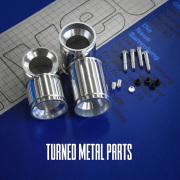
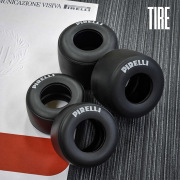
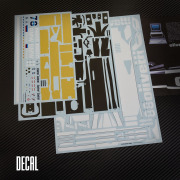
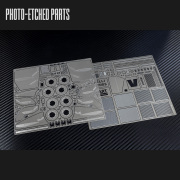
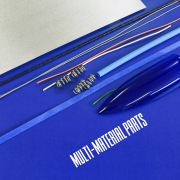
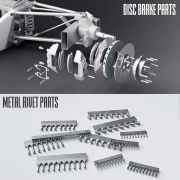
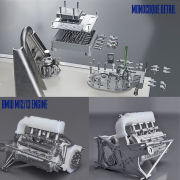
●K855 - 1/12scale Fulldetail Kit : BT55
1986 Rd.4 Monaco GP
#7 Riccardo Patrese / #8 Elio de Angelis
*(現在企画中ですので、発売時期・価格・仕様・構成が変更になる場合があります。 / CG画像はイメージです。必ずしもキット内容と合致するとは限りません。)
*(Product is currently still in design phase: release date/price/instructions for construction/build may be altered for official release. / Images based off CG captures may not accurately reflect that of the final product.)
[ 2025年6月発売 / June 2025 released ]

●ご予約数が一定数を超えた場合、初回生産分が発売前にご予約で完売になる場合がございます。その場合、次回生産までお待ちいただくことになります。この点、ご了承願います。
ご予約はこちらへ。
- this product is scheduled to be release in late June or early July 2025. To place a pre-order please use the link below to contact us using the mail form.
- if pre-orders reach a certain number this product may become out of stock before release as only a limited number will be made during the initial run. Any other pre-orders following will be covered during the next production run. We will stop taking pre-orders/orders completely should the order numbers surpass the maximum production amount.
For pre-preorders, please contact us here

2025年6月発売予定 June 2025
Price : \82,000- (+tax)
[ BT55について -About the BT55- ]
ゴードン・マーレイ ―― 後に天才・奇才と評されるF1デザイナーは、1969年、故郷南アフリカから単身イギリスに渡りブラバムにて職を得、その才能をグランプリにおいて遺憾なく発揮することになります。ブラバム時代のマーレイが設計したマシンは常にレギュレーションの隙間を狙った革新的アイデアが盛り込まれていました。"表面冷却"BT46、"Fan car"BT46B、走行中に車高を下降させるBT49、給油前提小型燃料タンク搭載のBT52..
そして、先進と革新でグランプリを闘い続けてきたマーレイにとって、迎えた1986年は、新たな理想形を現出すべく乗り越えるべき課題がいくつかあるシーズンでした。時代はターボ全盛となり、パワーが何より重要なファクターとなっていく中、ライバル勢よりもやや非力なBMWエンジン、そして83年からのフラットボトム規制を超えてダウンフォースを得る為の車体デザインの必要性、それまでのエースドライバー N.ピケの移籍.. マーレイがそこから導き出した答え ―― それは、"ロー・ライン・フォルム"。マシンを極限まで低く抑え、大型リアウイングに強いダウンフォースを発生させるコンセプトでした。そのために、BMWエンジンは72度傾け全高を低く抑え、ボディサイドはドライバーの肩より低くなり、エンジンに合わせたギヤボックスも新造することになりました。風防実験を通して手ごたえを感じたマーレイとチーム首脳陣は、この極限まで研ぎ澄まされたコンセプトとボディシェイプを纏ったニューマシン、"BT55"を1986年開幕の地、リオデジャネイロのジャカレパグアへ送り出したのでした。
しかし、"理想形"であったはずのマシンは、走行を重ねる度に問題が頻出する事態になります。傾けたエンジンによるオイルの潤滑不良問題、前年から採用されたピレリタイヤとのマッチング不足、長いホイールベースによる回頭性低下、ギヤボックスの信頼性不足..BT55は、その低重心故にストレートやコーナーで一定の速さを見せるものの、これらの問題点からトータルでのラップタイムを稼ぐことはできませんでした。さらに、シーズン半ばにしてチームに悲劇が襲います。5月のテストにおいて、ドライバーのエリオ・デ・アンジェリスが亡くなるという出来事に見舞われます。その後、デ・アンジェリスの代役として、デレック・ワーウィックがリカルド・パトレーゼとタッグを組んで残りの86年シーズンを闘うことになります。
BT55は、その成績故、シーズン中に大小さまざまな改変が行われました。開幕戦ではエンジンファンネルとチャンバーを低く抑えリアカウル内に収めるデザインで、そこから2戦目以降チャンバーがリアカウルから露出する高さに改められ、4戦目モナコでは重量配分改善のため左クーラーとターボが後方へ下がり、サイドポンツーン上のダクトも位置が下がりました。その後もサイドポンツーン前部やリアカウルの形状変更等、試行錯誤が最後まで繰り返され、86年シーズンを終えることになります。
BT55は、後年、そのラジカルすぎる設計思想から、"コンセプト先行の失敗作"と揶揄されることがあります。しかし、そう一言で片付けて良いマシンだったのでしょうか。多くの人々の記憶に残るその美しいフォルム、野心と想像力と理想への探求心が形となってレーシングマシンへと結実していた時代の名残..BT55は、語り継ぐべき物語を持ったF1マシンと言えるのではないでしょうか。そして、このマシンに纏わる物語は、続きがあるのです。
1986年シーズンから2年後、ブラバムから移籍したマーレイとマクラーレン設計陣が生み出したマシン、MP4/4は、F1史に残る偉業を成し遂げることになります。そこでチャンピオンを獲得した、時代を代表する"最強のマシン"こそは、マーレイが理想とした"ロー・ライン・フォルム"のコンセプトが正しく機能し、その思考の出発点たるBT55を礎として生まれたマシンの姿だったのです。

In 1969, Gordon Murray left his native South Africa to take up a job with Brabham, where he demonstrated his design talents in the field of Grand Prix racing. Many of his designs during the Brabham era aimed to exploit holes in the regulations, such as the “surface cooled” BT46, the “fan car” BT46B, the BT49 which lowered the ride height when driven, the BT52 which has a small fuel tank for refueling etc. All these innovations would make Murray remembered as a genius and maverick F1 designer.
In 1986 Murray would have new challenges to face: the majority of teams would use turbo engines, but the team was left with a BMW engine that was weaker than what their rivals had in an era where engine power was the most important factor. In addition, the new car needed to overcome the 1983 flat bottom regulations and yet still be able to produce downforce, and the team would lose their ace driver with N.Piquet leaving the team. The answer that Murray came up with was “low line form” - the machine would be designed to be as low as possible in conjunction with a large rear wing to generate strong downforce. To do so, the BMW engine was tiled as 72 degrees to reduce the overall height, with the body sides being lower than the driver's shoulders, and a brand new gearbox was designed to work in tandem with the engine. After positive results from wind tunnel testing the design concept was taken to the limit to create the BT55, which would debut at Jacarepagua, Rio de Janeiro for the 1986 season opener.
However, despite the machine achieving its “ideal” form, problems began to surface once it started racing - the tilted engine caused lubrication problems, the Pirelli tires brought over from the previous year did not work well with the car, the long wheelbase reduced turning performance, and the gearbox was unreliable. While the BT55 seemed fast on straights and corners due to its low center of gravity, it was unable to produce fast total lap times. Midway through the season tragedy struck when the team lost their driver Elio de Angelis during a test run in May. Angelis was replaced by Derek Warwick, and he and Riccardo Patrese would team up for the remainder of the 1986 season.
Various changes were made to the BT55 in hopes to improve its performance: during the season opener the engine funnels and chamber were lowered to fit under the cowl better, but in the following race the chamber was raised and exposed through the real cowl. At Rd.4 in Monaco the left cooler and turbo were moved back to improve weight distribution, and the ducts on the side pontoons were also lowered. Various changes were made to the front of the sidepods and real cowl through trail and error throughout the season, but the car showing little improvement as the season came to an end.
The BT55 would be remembered as a radical car that worked in concept but not in motion. While it was a failure, it represented an era where racing machines were designed with ambition, imagination and ideals, all under a beautiful form that would be remembered by many.
In 1988, Murray would move to the McLaren team, and along with their design team would bring forth the MP4/4 – the strongest F1 machine at the time. The MP4/4 properly utilized Murray's low line form concept, in which the BT55 served as the originator of the concept in motion.
[ キット概要 -Kit Details- ]
■レジン、ホワイトメタル、エッチング、シルクスクリーン印刷デカール、ゴムパーツ、アルミ挽き物、各種コード類等をふんだんに使用したマルチマテリアル・キットです。
■E.デ・アンジェリスにとって最後のF1レースとなった1986年第4戦、モナコGP仕様をモデル化しました。デカールはR.パトレーゼとE.デ・アンジェリス、2台の選択式。
■ホイールリム、メインメーター、リアダンパー下部、ホイールシャフト・ナットはアルミ挽き物製。
■ECU(エンジンコントロールユニット)パーツは3Dプリント樹脂製で内部ディテールも再現。
■各種パイピング、チューブ、耐熱シート等、マルチマテリアルでパーツ化し、リアルさを追求しました。
■ボディカウルとノーズは車体から脱着が可能。完成後も内部構造を見ることができます。
■スポンサーロゴデカールの他に、モノコック等に使用するカーボン・ケブラーデカールを同梱。
■ゴム製タイヤはメーカーロゴ印刷済。
- a full detailed, multi-material kit featuring white metal, resin, etching, turned parts, rubber parts, silk screen decals and various cords allowing for maximum representation of the original vehicle.
- based on the version that raced at Rd. 4 Monaco GP in 1986, which marked de Angelis' last F1 race. Decals for R. Patrese's car for the same race also included.
- aluminum turned parts used for wheel rim, main meter, lower rear damper, wheel shaft and lock nut.
- ECU (engine control unit) parts made using 3D printing, allowing for a detailed interior finish.
- various materials used for piping, tubes, heat resistant sheet etc. for a realistic finish.
- body cowl and nose can be removed post construction, allowing full view of the detailed interior after completion.
- carbon and kevlar decals included on top of sponsor decals.
- tire comes pre-printed with maker logo.








●K855 - 1/12scale Fulldetail Kit : BT55
1986 Rd.4 Monaco GP
#7 Riccardo Patrese / #8 Elio de Angelis
*(現在企画中ですので、発売時期・価格・仕様・構成が変更になる場合があります。 / CG画像はイメージです。必ずしもキット内容と合致するとは限りません。)
*(Product is currently still in design phase: release date/price/instructions for construction/build may be altered for official release. / Images based off CG captures may not accurately reflect that of the final product.)
[ 2025年6月発売 / June 2025 released ]




